Using editable forms
Google Forms is a powerful tool for creating online surveys and collecting responses. By combining the editable response URL feature in Google Forms with Publigo, you can enhance your survey experience and streamline the process of generating personalized documents from survey responses. This tutorial will guide you through the steps of using Google Forms with editable response URLs and Publigo, highlighting the benefits and providing real-world use cases.
Benefits and Impact
Personalization
Editable response URLs allow respondents to revisit their survey responses and make changes if necessary, ensuring accurate and up-to-date information.
Follow-up Communication
Editable response URLs enable you to communicate with respondents and gather additional information based on their survey responses.
Easy Editing
The editable Response URL allows respondents to edit their form submissions after they have been submitted, providing them with the flexibility to make changes or updates if needed.
Scenario
Let's consider a customer service survey for a software company. The survey collects feedback on various aspects of the customer experience, such as product satisfaction, support quality, and feature requests. With editable response URLs and Publigo, the company can automatically generate personalized follow-up emails for each customer. If a customer expresses dissatisfaction with a particular feature, the company can promptly address the concern by sending a personalized email offering support or providing updates on feature enhancements. This approach not only demonstrates excellent customer service but also shows the company's commitment to improving the customer experience based on their feedback.
A. Set up your Forms
2. Enable Editable Response URL in Google Forms.
2.1. Click Settings of the form editor.
2.2. Click Responses > enable Allow response editing.

3. Build your template (or select a relevant template if you already have one).
Info: You can opt to send emails as an alternative (instead of document merges like PDF). Learn more.
* If this feature is already enabled, skip this step.
Note: You will be prompted that A new file will be generated when a response is submitted to the form.
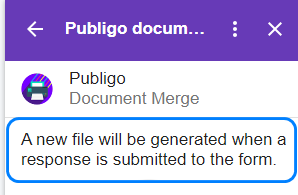
5. (Optional) Enable the Regenerate edited rows feature if you want to create an updated document based on the modified form submission of your respondents. When this feature is selected, it will create a new row / record for the updated form submission (leaving the previous/original file created untouched). Alternatively, if this feature is disabled, it will overwrite the existing row’s / record’s data.
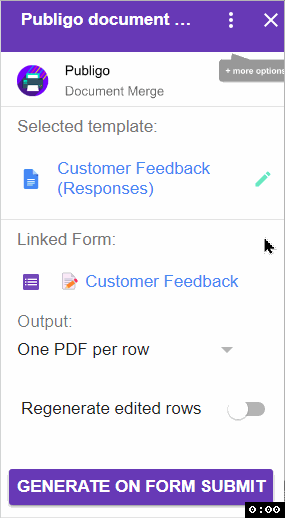
6. Click the GENERATE ON FORM SUBMIT button to initialize the onFormSubmit feature.
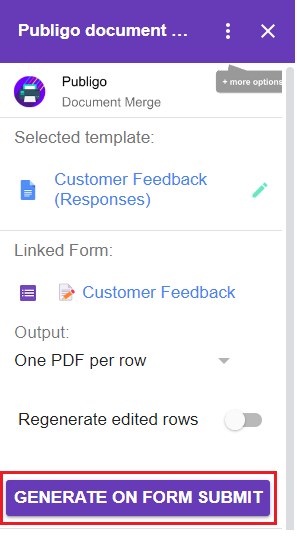
Note: You will be prompted that A new file will be generated when a response is submitted to the form (A). Also, a new column labeled Response Edit URL will be created (B).

B. Configure link for the Response Edit URL
7. Now that we have the Response Edit URL column, we’ll configure the marker (merge tag) so you can use it in your document merge.
With Publigo, you can insert a dynamic link anywhere in your email draft. Once sent, your recipients can click on it and jump to the targeted link or URL. To achieve this task, we're going to use Google Sheets' built-in function called
hyperlink().
7.1. We’ll need 2 columns for this. In our example, we labeled it as Response Edit URL and links. Where:
- Response Edit URL - the target or destination site (column H)
- Display Text - we manually entered the words click here in the argument for this example
- links (rename as needed)- this contains the hyperlink() function that will reference your URL & Display Text columns (column I)
7.2 . Click cell I2 then type in = hyperlink(H2, “click here”). Where:
- H2 - is the cell of your Response Edit URL
- “click here” - is the Display Text that we manually hard coded, then press enter.

7.3. Then copy the formula to the relevant rows.
8. If you choose to send emails instead of document merges (which is ideal in this setup since we’re using editable Google Forms links), then follow these steps:
A) In the Publigo main page, click More actions > Files sharing > Email notification.
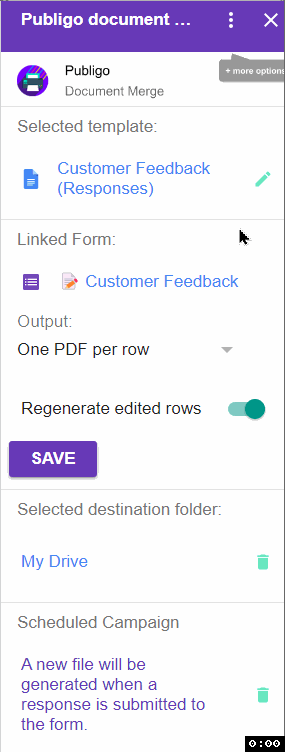
B) Under List Recipient(s) As, select Sheet Column.
C) Select the relevant column for Recipient(s) Column (Email) in our example).
📌 Modify the CC & BCC fields as needed.
D) Replace the entry on the Subject field with your own.
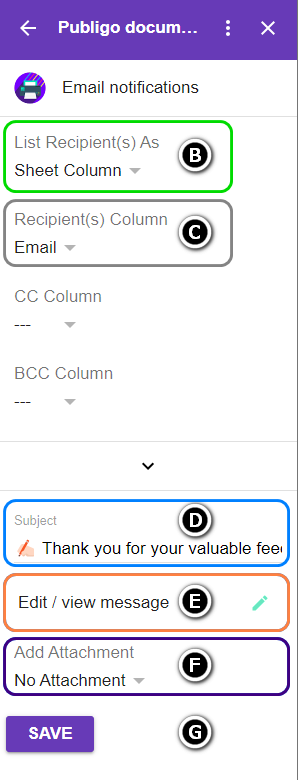
E) Then click Edit / view message to enter your content with the links markers (the one containing the Response Edit URLs) in your email draft (or document merge template).
F) Under Add Attachment, select either No attachment, PDF, or Word.
We used No attachment in our example since we’re going to send emails to the recipients (which is ideal in this setup since we’re using editable Google Forms links allowing them to modify their form entries).
G) Lastly, click SAVE for the changes to take effect.
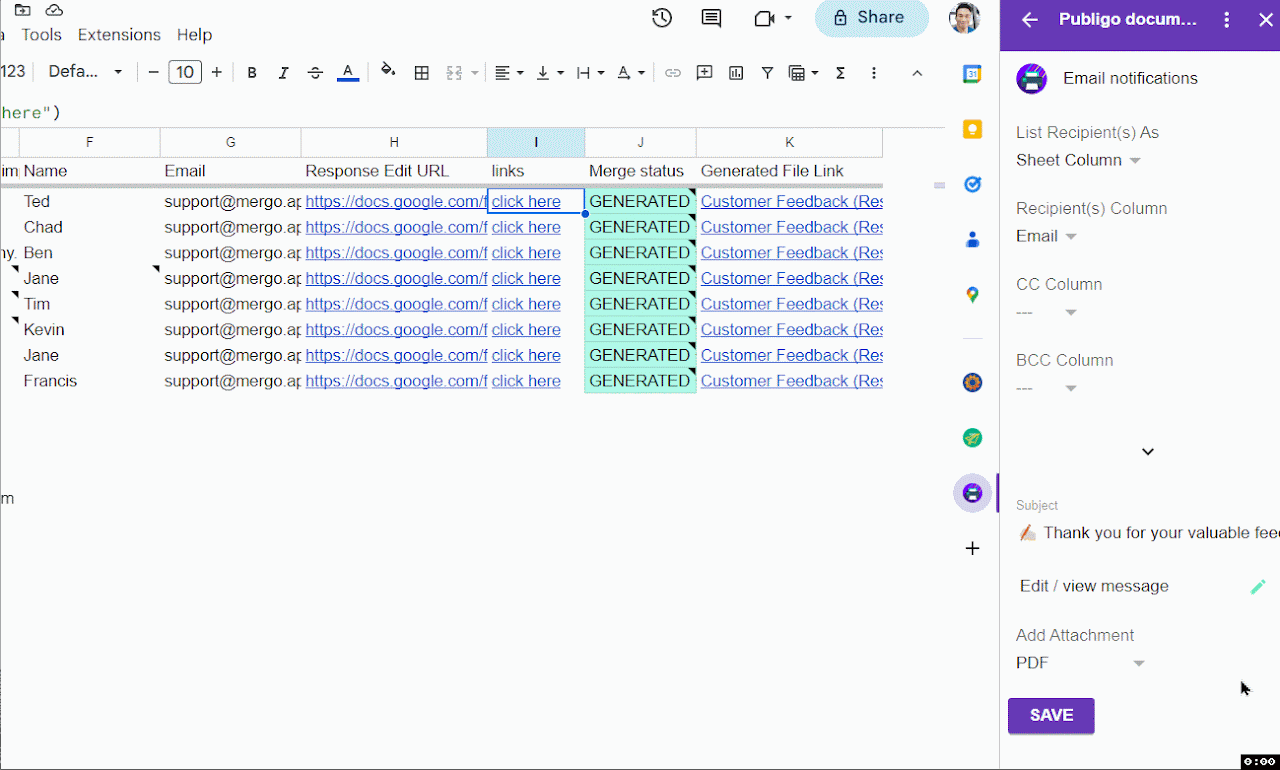
C. Start collecting responses
Share the Google Forms survey link with your respondents via email, social media, or any other preferred method.
A new email (or document merge file) will be automatically generated when a response is submitted to the form.
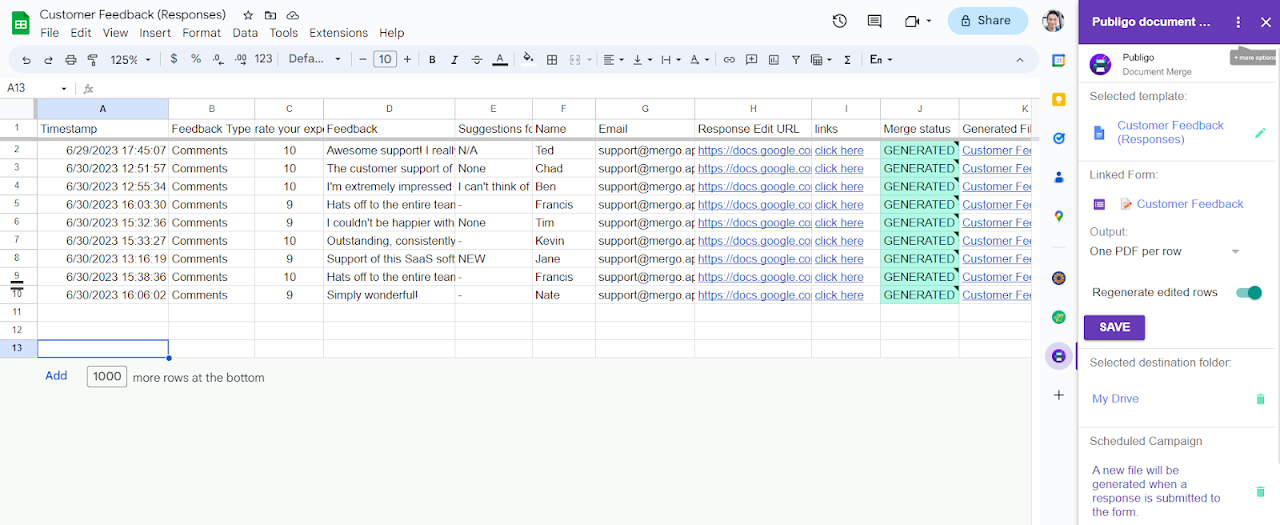
Here’s a screenshot of our campaign / datasource with the processed (generated) email/document merges
.
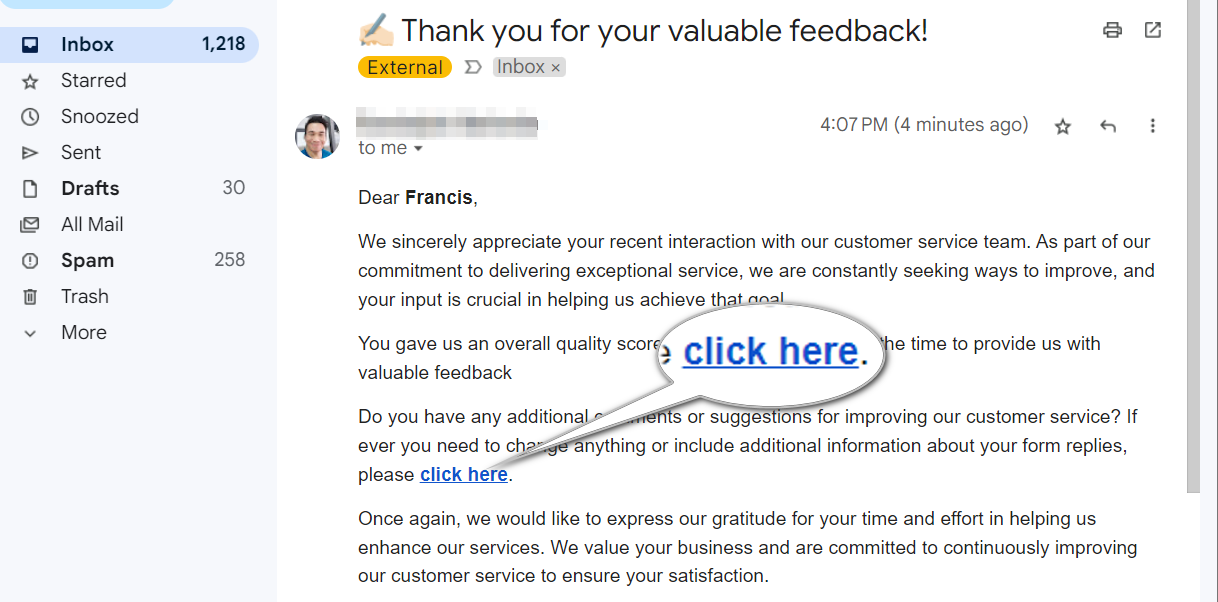
Here’s an email sent to our recipient with the link allowing them to modify their form entries
Recap
By leveraging the power of Google Forms with editable Response URLs and Publigo, you can enhance your form's functionality and streamline your workflow. The ability for respondents to edit their form submissions provides flexibility and improves collaboration, while Publigo enables you to automate document merging and create personalized reports. Whether it's event registrations, surveys, or order forms, this combination of tools is highly versatile and can be applied to various use cases.












